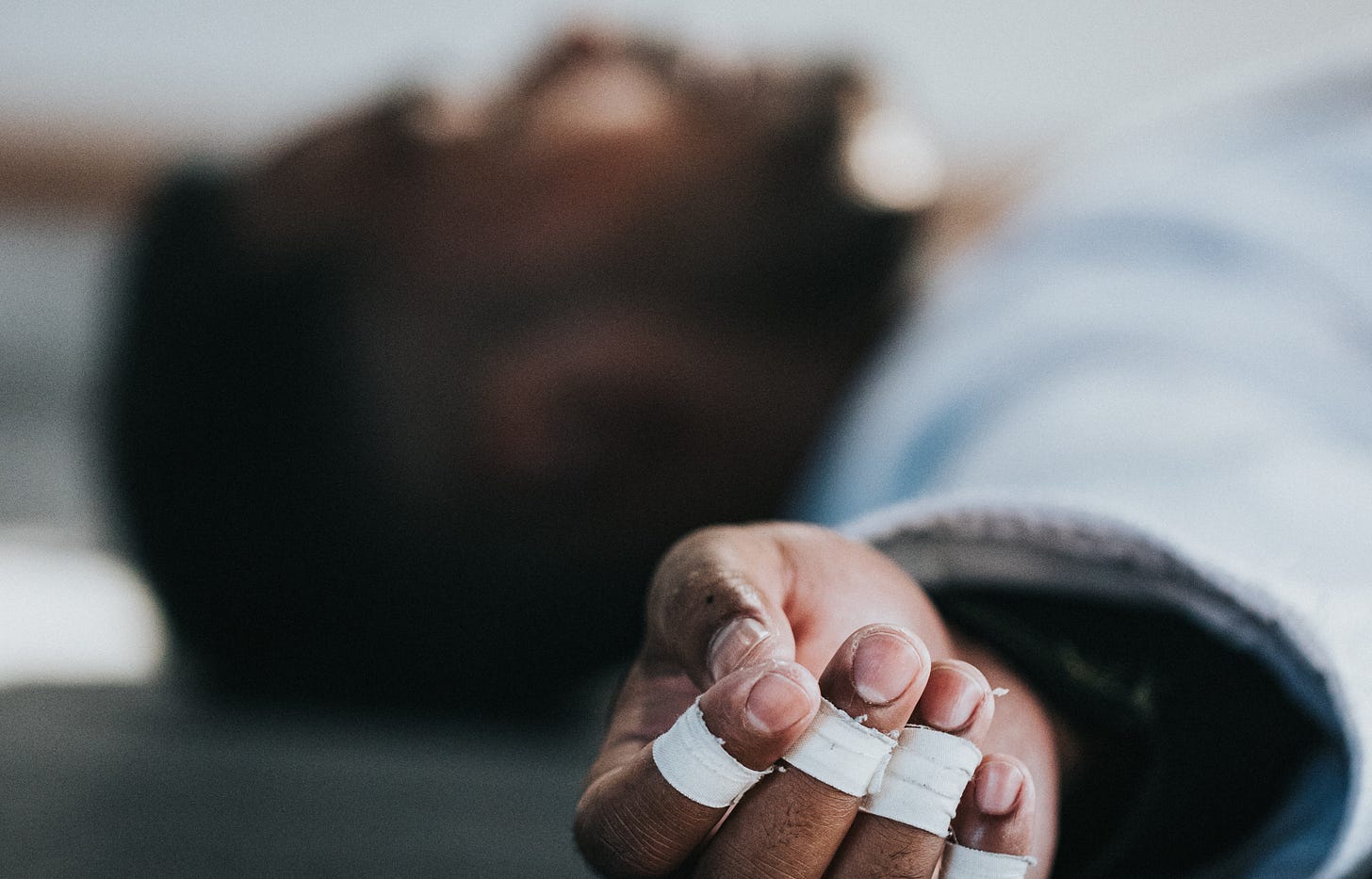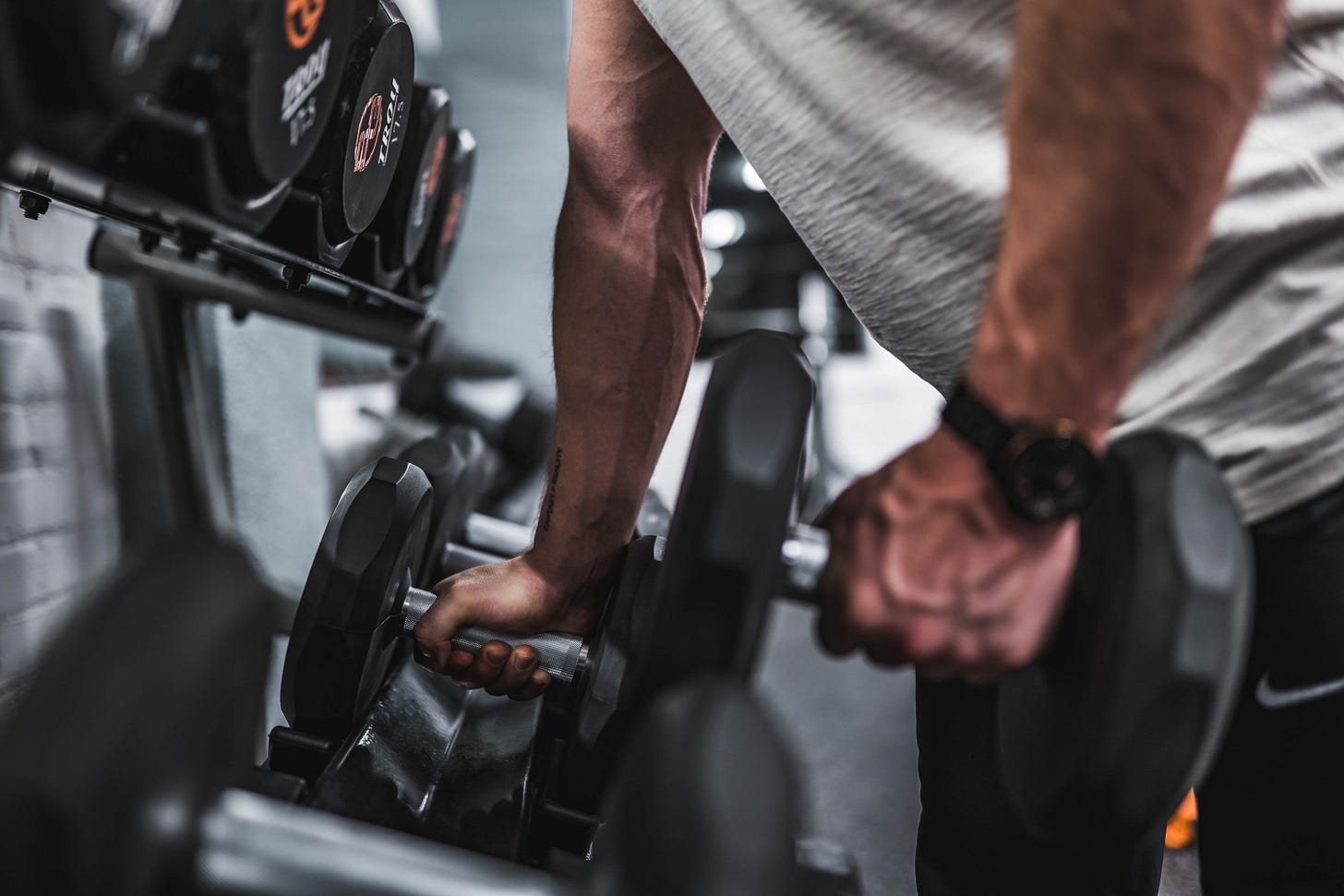🔑Key Points
In this article I break down my Top 5 Sauna benefits. Ranked in order:
5. Enhances the quality of my sleep.
4. Promotes faster healing when I’m injured.
3. Helps me recover faster from hard workouts
2. Enhances my cardiovascular endurance
1. Drumroll… see below.
📰In This Issue:
In the last decade, sauna use has increased in popularity among athletes and enthusiasts alike. This surge in popularity is likely due to the various health benefits that scientists have recently identified.
I have been using the sauna for about a decade, and not surprisingly, it has been a game changer for me. Since there seems to be a dose-dependent response, I try to sauna every day.
In this article I want to share the Top 5 Benefits Sauna has offered me over the last few years to encourage you to make sauna a part of your daily routine:
5. Enhances the Quality of my Sleep🛌🏻💤
The correlation between sauna use and sleep quality is well established. In a cross-sectional study documenting the benefits of sauna-bathing by Hussain et. al., 83.5% of participants reported enhanced sleep after sauna use.
There are various mechanism through which sauna facilitates sleep. But in summary, our core body temperature is closely related to our ability to fall asleep. As the surface of the body heats up during a sauna session, the hypothalamus responds by triggering compensatory mechanisms that decrease core body temperature by 1-3 degrees. Coincidentally, falling asleep requires a similar drop in core body temperature, and therefore, the temperature changes triggered by a sauna session help us transition into sleeping-mode and remain asleep:
Core body temperature (CBT) (c) (n = 7) during 48 h in the whole-room indirect calorimeter. Data are expressed as the mean ± SD value per hour. The black diamonds with broken lines represent the 7-h sleep condition and the white circles with black lines represent the 3.5-h sleep condition. Hibi, M., Kubota, C., Mizuno, T. et al. Effect of shortened sleep on energy expenditure, core body temperature, and appetite: a human randomized crossover trial. Sci Rep 7, 39640 (2017). https://doi.org/10.1038/srep39640
In addition, sauna use also promotes blood vessel dilation and increased parasympathetic activity. Together, these changes release endorphins and allow the body to enter into a state of deep relaxation that further promotes sleep.
For better results, try sauna at night.🌙
4. Helps me Heal Faster when Injured🥋
I swear 50% of combat sports is injury management. Luckily, applying heat to soft tissue injuries can have some beneficial effects, and in the case of sauna, some of the same mechanisms that enhance sleep can also supercharge the body's natural healing process.
For example, blood vessel dilation leads to improved circulation. In turn, improved circulation leads to better oxygenation, increased nutrient transport, and more efficient waste product removal from injury sites. All of these are needed for an efficient injury repair process and a speedy recovery.
Simultaneously, endorphins act as the body's natural painkiller signals countering acute injuries from multiple fronts. Sauna-induced endorphin release helps with pain reduction and discomfort associated with injuries. Vescovi et al., 1992. This mechanism helps us regain mobility, facilitating the rehabilitation process and allowing us to recover faster.
In addition to these, sauna also promotes the maintenance of positive net protein synthesis via the induction of growth hormone release. (Hannuksela and Ellahham, 2001). Maintaining positive net protein synthesis supports the molecular damage repair mechanisms because it provides the building blocks necessary to do the repair work.
The use of heat therapy in various forms including sauna has been extensively examined in a number of studies. Here are a few:
Nadler SF, Weingand K, Kruse RJ. The physiologic basis and clinical applications of cryotherapy and thermotherapy for the pain practitioner. Pain Physician 2004;7:395–9
Rabkin JM, Hunt TK. Local heat increases blood flow and oxygen
tension in wounds. Arch Surg 1987;122:221–5.
Hardy M, Woodall W. Therapeutic effects of heat, cold, and
stretch on connective tissue. J Hand Ther 1998;11:148–56
3. Helps me Recover Faster from Hard Workouts🏋️
As BJJ athlete looking to maximize mat-time, this one is very important for me for two main reasons:
Exercise is the single most important intervention anyone can implement in order to improve their health. The data is in and the evidence is irrefutable.
Proficiency at BJJ is strongly correlated with mat-time.
Hence, the faster I recover in between training sessions, the more I can train → the more I can train, the better it is for the above two goals.
High-intensity exercise can result in Exercise-Induced Muscle Damage (EIMD) which usually results in cramps, muscle strain, impaired muscle function and Delayed Onset Muscle Soreness (DOMS) - which peaks 48 to 72hrs after the workout. This means that if you workout hard every day, you are just going to be continuously and perpetually in pain. Like me.
The mechanism through which heat therapy facilitates recovery from exercise have been described in various modalities including localized heat applied via microwave, ultrasound, and heat wrap therapy. In the case of sauna use, a 2015 study by Khamwong et. al., demonstrated improvements in pain, range of motion, and pain free strength when participants were exposed to sauna after intense exercise Vs. a no treatment control group. Here is some of the data from that paper:
Mean and Standard Error of Mean (SEM) of Average Pain, Visual Analogue Scale (VAS) From Pre-Exercise (Pre), Immediate After (Imm), Day 1 to Day 8 (D1 - D8) Following Eccentric Exercise for the Sauna and Control Groups
Relative Changes in Range of Motion in Passive Extension (PE) From Baseline (Pre) Immediately After (Imm), and 1 - 8 Days (D1 - D8) Following Eccentric Exercise for the Sauna and Control Groups
Normalized Changes in Grip Strength (GS) With Pain-Free From the Baseline (Pre: 100%), Immediately After (Imm), and 1 - 8 days (D1 - D8) Following Eccentric Exercise for the Sauna and Control Groups.
2. Enhances my Exercise Fitness🏃🏽♂️
Many of the physiological responses to sauna bathing replicate those observed in exercise. This is very good news for several reasons:
I can improve my cardiovascular endurance while sitting in the sauna doing nothing other than talking to my friends.
If I get injured, I can rely on the sauna to keep up my cardiovascular endurance and muscle mass while I recover.
Exercise itself has many benefits, some of these benefits can be obtained from sauna bathing a well.
After reaching my point of exhaustion during a hard training session, I can still push my cardiovascular limits even further without risking injury just by sitting in the sauna (Don’t do this unless you are a very experienced sauna goer and know how to balance fluids and electrolytes).
Here is some data on the exercise-related physiologic changes sauna induces:
Increased endurance: An intervention study examined how regular sauna sessions impacted endurance among long-distance runners. Results revealed that a 30-minute sauna session twice per week over 3 weeks led to a 32% increase in the duration the participants could run until reaching exhaustion (Scoon et al., 2007).
Improved cardiovascular function: A randomized controlled trial found that endurance training in a sauna suit led to improved performance and respiratory measures, including VO2max (Van de Velde et al. 2017).
Enhanced thermoregulation: After heat acclimation occurs, sweating is triggered lower temperature (Costa et al., 2014), plasma volume and stroke volume also increase (Costa et al., 2014; Kukkonen-Harjula et al., 1989)
Muscle mass maintenance: A study in humans found that heat treatments applied locally to muscle during 10 days of immobilization prevented the loss of mitochondrial function, increased HSP levels, and attenuated skeletal muscle atrophy by 37% (Hafen et al., 2019).
1. Mind-Blowing Reduction in All-Cause Mortality 🤯
By far, the number one benefit of sauna is reduction across all cause mortality. Nothing comes close. Sauna is basically a magic pill that allows you to live longer and better, without tasting like medication. As far as I am concerned, this benefit alone makes the case for daily use. Here are some mind-blowing numbers from various reports:
Risk of all-cause mortality was 40% lower among frequent sauna users compared to infrequent users, independent of conventional risk factors(Laukkanen et al., 2015a).
In men who reported using the sauna 2–3 times per week, the risk of cardiovascular disease (CVD) mortality was 27% lower than among men who reported using the sauna only once weekly (Laukkanen et al., 2015a).
These effects were dose-dependent: Among men who reported using the sauna 4–7 times per week, the risk of CVD mortality was 50% lower than among men who reported using the sauna only once week (Laukkanen et al., 2015a).
Women who were exposed to seven 30-minute sauna baths over a period of 2 weeks exhibited reduced plasma cholesterol concentrations (Pilch et al., 2014b), and similar results were observed in men (Gryka et al., 2014).
The KIHD studies also revealed that frequent sauna use was associated with reduced risk of developing age-related neurodegenerative conditions including dementia and Alzheimer's disease, in a dose-dependent manner
Men who used the sauna 4–7 times per week had a 65% reduced risk of developing Alzheimer's disease, compared to men who used the sauna only 1 time per week (Laukkanen et al., 2015b).
A randomized controlled trial showed participants experienced reduced symptoms of depression, improved appetite and reduced somatic complaints and anxiety (Masuda et al., 2005).
Sauna use reduces inflammatory markers such as CRP (Laukkanen and Laukkanen, 2018)
Sauna use is associated with reduced risk of developing certain chronic or acute respiratory illnesses, including pneumonia (Kunutsor et al., 2017).
Sauna use therapy elicit improvements in respiratory function in men with obstructive pulmonary disease (Cox et al., 1989; Umehara et al., 2008).
Pro tip: Sauna daily. You can thank me later.
Additional Resources:
Disclaimer: This content is provided for educational purposes only and should not be construed as medical advice. Always consult with your primary care physician (PCP) or a qualified healthcare professional before making any changes to your lifestyle, diet, or exercise routine. The information presented in this article is not intended to diagnose, treat, cure, or prevent any disease. Individual results may vary. The author and publisher of this article are not responsible for any adverse effects or consequences resulting from the use or application of the information provided. Please use your own discretion and judgment when implementing any suggestions or recommendations.















